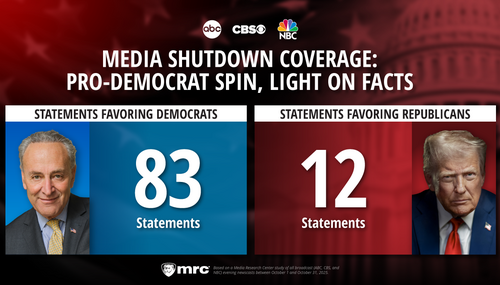The Wall Street Journal’s Stephanie Kang and the New York Times’s Michael Barbaro today used similar language to describe the retail shopping season as so-so. But buried deeper in Kang’s story were facts which undercut her argument and Barbaro admittedly relied on “anecdotal reports,” mainly from recently transit-strike-plagued
Barbaro opened his December 27 article noting that “Many retailers hoping for a big finish to the holiday season instead had lighter-than-expected crowds over the long Christmas weekend, according to anecdotal reports, leaving stores to rely heavily on the next few days to pump up December sales.”
Cautioning that while the numbers aren’t final, “analysts and retail executives are projecting a respectable but not stunning season” for retailers, Barbaro informed readers that retail was expected to grow “6 percent over a year earlier, compared with 6.7 percent in 2004. "
Meanwhile on page A13 of the Wall Street Journal, reporter Stephanie Kang echoed Barbaro’s glass-half-empty language in her lede, which informed readers that “consumers came back to stores…to deliver a solid, if not spectacular, holiday season, according to one early projection.”
Yet despite her glass-half-empty lede, Kang noted that survey -- conducted by MasterCard from November 25 through December 24 -- found that holiday retail spending rose 8.7 percent in 2005 over the same period in 2004. Kang also reported that the 2004 retail shopping season was better than had been projected by industry leaders: “Last year, MasterCard projected a 8.1% gain in holiday retail sales, and in January 2005, the Commerce Department reported an 8.7% increase in December sales. The NRF [National Retail Federation] forecast a 4.5% gain in 2004 holiday sales and in January 2005 reported a 5.7% rise."
Kang also reported Internet shopping is “expected to top predictions of $19.6 billion in sales… a figure that is 24% ahead of the $15.8 billion consumers spent online last holiday season, according to comScore Networks Inc.”
The above, however, is just the latest example of how newspaper reporters are burying good economic data after leading off with pessimism, while their editors bury stories on good economic indicators deep in the pages of their broadsheets. Free Market Project’s Amy Menefee wrote an item on the latter just before leaving for Christmas vacation.




